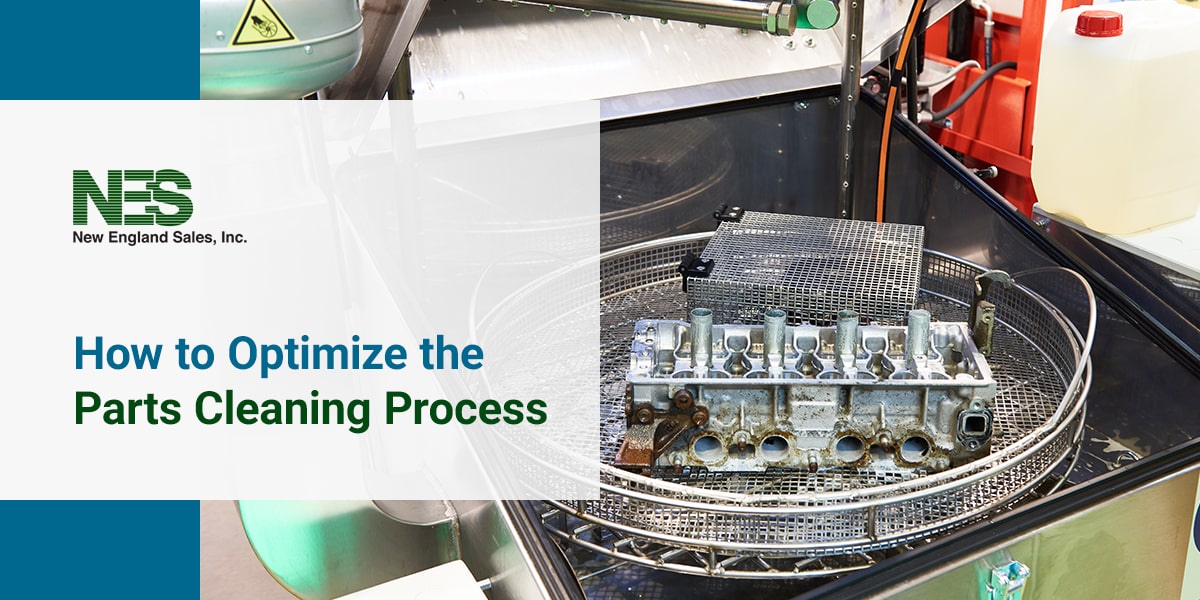
The parts cleaning process is an essential part of productivity, as it can affect everything from further parts processing to packaging and regulatory compliance. Without an optimized strategy, you might be facing issues in any one of these areas or using excessive resources to fix problems. Fortunately, there are a few things you can do to improve your parts washing process and ensure an efficient, compliant clean.
Parts cleaning systems remove grit, grime, oil, miscellaneous debris, dirt, paint, and other contaminating substances and physical traces left on parts after the manufacturing process. For example, metal parts cleaning might involve clearing away burrs and chips left after the part was machined. Whether your cleaning method uses oscillation, agitation, turbulation or ultrasonic cavitation, it can help you accomplish two primary goals — preparing parts for further processing and meeting industry standards.
Many processes, like coatings and treatments, can only achieve high-quality results if the parts are free of residues and other soils, and the cleaning process accomplishes this. As for industry standards, many fields face strict regulations to ensure safety. Cleaning processes ensure that a part meets these specifications. Some companies that need to meet stringent quality control standards include manufacturers of medical parts, implants and aerospace components.
Parts cleaning can also help you prepare for inspections and boost equipment lifespans, allowing you to get more bang for your buck from expensive machinery.
While every operation is different, here are some strategies to consider that could optimize your parts washing processes.
If you’re looking for ways to degrease parts fast, consider ultrasonic cleaning systems. Ultrasonic cavitation uses microscopic bubbles and delivers a more efficient, higher-quality clean than you can get with traditional methods.
In this cleaning method, a generator system creates mechanical energy, which in turn creates cavitation bubbles. The microscopic bubbles collapse, creating tiny shockwaves that reach into every nook and cranny to remove dirt, oil and other contaminants. This process is one of the most thorough and consistent options, great for decontamination and general cleaning.
The chemical components and process needed to clean your parts will depend on a variety of factors, like your cleaning solution, its temperature, concentration and compatibility with the soil. Other elements include the type of mechanical action required and how long your part will need to be exposed to the solution. This equation can get complex, so it’s important to carefully consider these factors and make sure you use the right combination for your parts.
The ideal mix of methods and materials can help you maximize efficiency, improve quality, increase personnel safety and stay compliant. You can typically choose between aqueous and solvent cleaning processes:
Another way to improve your process is to minimize your water usage. You can work more efficiently and reduce costs by limiting the amount of water you use and need to treat.
One method suggested by the Environmental Protection Agency (EPA) is to use high-pressure spray nozzles. In some configurations, they use less water than an immersion rinsing process. They spray the part over a catch tank, where water collects to be recycled or discharged. It offers better draining because it dilutes and lowers the viscosity of process fluid film that can cling to the part. You can combine spray nozzles with other water-saving strategies, too, like cascade rinsing.
Look for solutions that automate cleaning. They can significantly decrease personnel requirements while increasing safety and reducing cycle times. Automated parts cleaners offer exceptional quality and short cycle times. Without the need for personnel, they can boost efficiency considerably.
Consider whether your process deposits more impurities than necessary. If you can reduce contaminants like rust and coolants, you might be able to save time and resources during the washing process. For instance, you could avoid using solvents that require more complex handling requirements, or you might reduce the contaminants entering a parts-washing bath and how frequently you need to change the solution.
Most manufacturers are constantly looking for ways to work more efficiently. The time it takes to clean a part varies for different components and methods, but knowing how to speed up the parts cleaning process can help you boost efficiency in your operation. Solvent cleaners tend to dry more quickly, but the aqueous cleaning process is generally quicker than a few hours of soaking in a solvent tank. Fortunately, automated parts washers limit the need for labor, so workers can go elsewhere while parts undergo cleaning.
An efficient parts washing system’s primary goal is to clean manufactured parts, but if the system is optimized for efficiency and performance, you can enjoy a variety of other advantages. Some benefits of parts washer systems tailored to your parts and business include:
If you think your parts washing system could use some improvement, the experts at New England Sales can help. How long it takes to degrease parts and remove other types of soil can vary widely, with a long list of factors that influence speed and quality. Fortunately, parts washing is our specialty. We can help you identify the best method for your operation and find the equipment to match. We carry industrial parts washers and cleaning systems from industry leaders, all supported by a knowledgeable, experienced team.
Explore our equipment online, or reach out to us today to learn more!